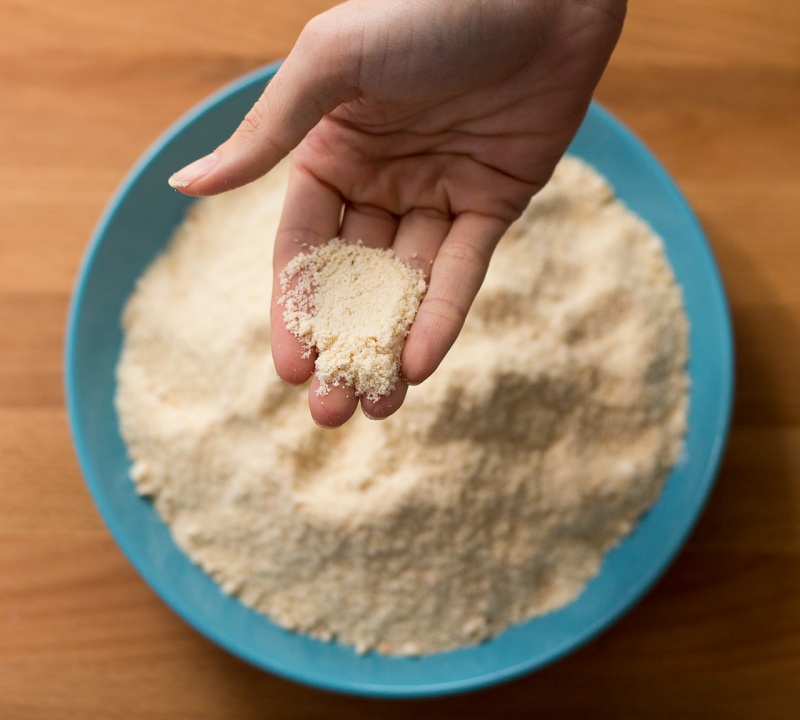
When you make almond milk at home, you end up with A LOT of almond pulp as a by-product! Before you reach for the bin, hang on a second – did you know could put it to a very good use and make your own almond flour? Given that almonds are rather expensive it’s a great move as you’ll have two homemade products for the price of one.
So to make your own almond meal, you need an oven tray, an oven and at least a blender or a coffee/nut grinder would be even better. In my experience, a coffee/nut grinder will give you best results – you’ll end up with a fine powder, which is very close in texture to shop-bought almond meal.
A blender will give you a slightly coarser mix, but still fine enough to be able to use the flour in cookies (such as these), pancakes and cakes.
To save myself some work, I dry out wet almond pulp in the oven on the same day as I make my milk (or else it will go bad) and then store it in an airtight container. I do a batch grinding session once I’ve made my milk several times.
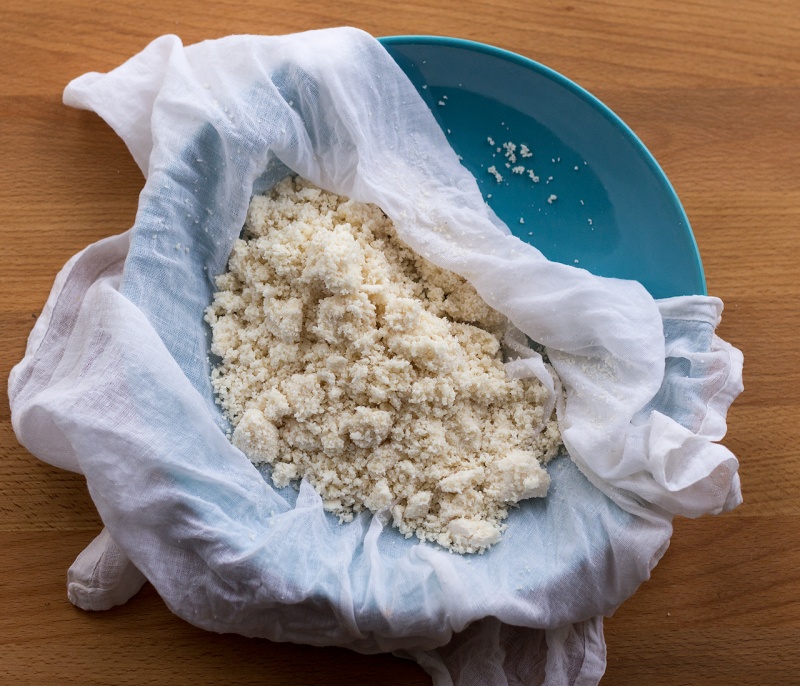
- 2 cups wet almond pulp
- Preheat your oven to 100° C / 210° F.
- Spread wet almond pulp on a lined baking tray and put into the oven for about 1-1.5 hours (until the mixture is completely dry to the touch). Every half an hour, stir the mixture with a spoon to make sure that it dries out evenly. Don’t worry if there are any odd lumps, they will go during grinding phase.
- Put dried out pulp into a nut/coffee grinder or a clean blender and process until it has been ground finely.
- Store in a cupboard, in an airtight container.

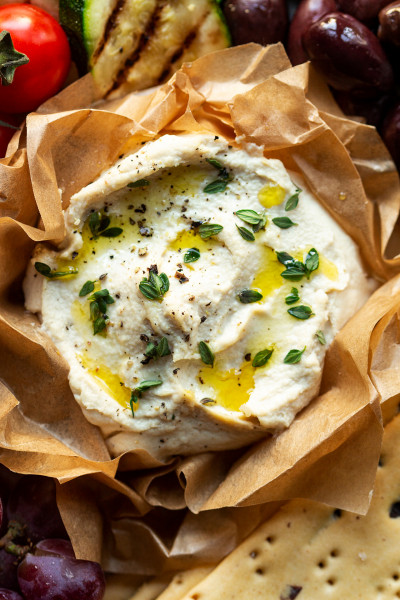

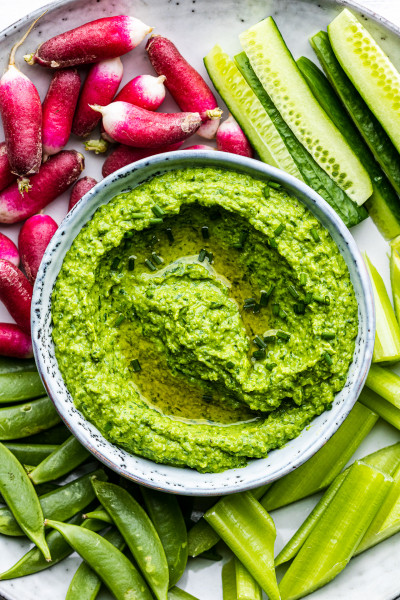


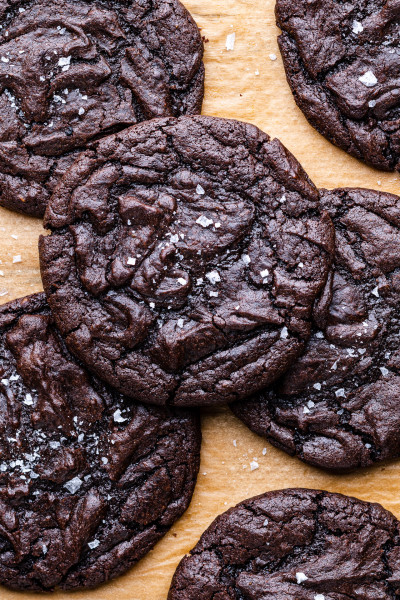
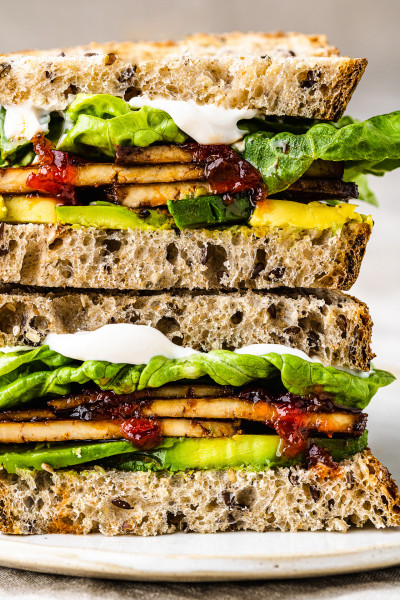
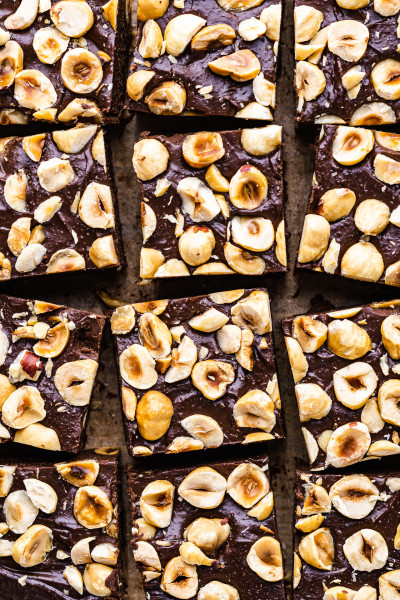
I‘ wondering why my almondflour is every time wet or oily or both when i blend my almonds in my blender.I looked at the internet and i found your blog. That‘s what i thought. Now, 400 grams of blended almonds are now in the oven :-) Try to make flour drier. Hope, my next receipes would be better with that method. Almond flour is also more expensive here in germany, as natural almonds. Sorry, for my funny english. Hope, you understand.
Romy :o)
I understand totally, I used to live in Greece where almond flour was very expensive too so I had to make my own. I hope you'll be pleased with this 'hack' x Ania
Just wondering if you know....
On some recipes on some blogs they call for almond flour but when I watch the video it actually looks like almond meal...
I thought almond flour is exactly what you have showed.... but now I’m confused..... ‘normal’ flour doesn’t contain fat so why should almond flour ??🤷♀️
I guess because almond flour is not really a flour, it's finely ground up almonds, which contain fat naturally. This waste reducing hack works quite well as almond flour in muffins and cakes, I would not use it to make specialised things like macaroons for example. Plus, you will never be able to get it as finely ground as the one you buy in shops. Hope that helps! Ania
One question, I find that any recipes I use this almond flour with turn out a bit dry, is that because I already took all the moisture out of it making the almond milk? And how would you combat this problem? Thanks so much in advance:))
That's great, I am so happy you found this useful. I have stopped making almond milk the moment I moved back from Greece (it was hard to get good almond milk there and it was very expensive) so I haven't baked with almond pulp for a while, but yes, in the process of making milk, you essentially extract some of the natural fats and moisture so I would just add a touch more moisture and maybe a spoonful of extra fat to compensate.
I would treat it like a regular almond flour, store in it in a dark and dry place, in an air-tight container. Ania
I've made the almond meal recently and it's great in so many recipes. I do have a question about a bread roll recipe I love... when I use homemade meal vs store bought, the rolls are more dense, dry and smaller. Could this be because store bought uses the whole almond and therefore has more moisture than homemade using just the pulp? Should I try reducing the amount of homemade meal in the recipe to see if it works better? Any advice would be great.
Thanks, Suzi.
Yes, I reckon you hit the nail on the head! It's probably because some of the fatty liquid has gone into the almond milk. These days, I don't dry my almond pulp out before using as all dough recipes call for some sort of liquid and then I compensate by using a bit less liquid than I would normally. It might also be a good idea to up the fat content (by say 1 tbsp to start) to compensate for the fat that has gone to into the almond milk. Hope that helps a little. Ania
I store it in a air-tight jar. If you don't dry it out, it will probably keep for a few days (3 max, I imagine) in the fridge but after that time it will start going mouldy. You could try freezing it instead but I haven't myself. Hope that helps. Ania
P.S I love your recipes. I have made quite a few already. Thanks for sharing! You're a very talented lady.